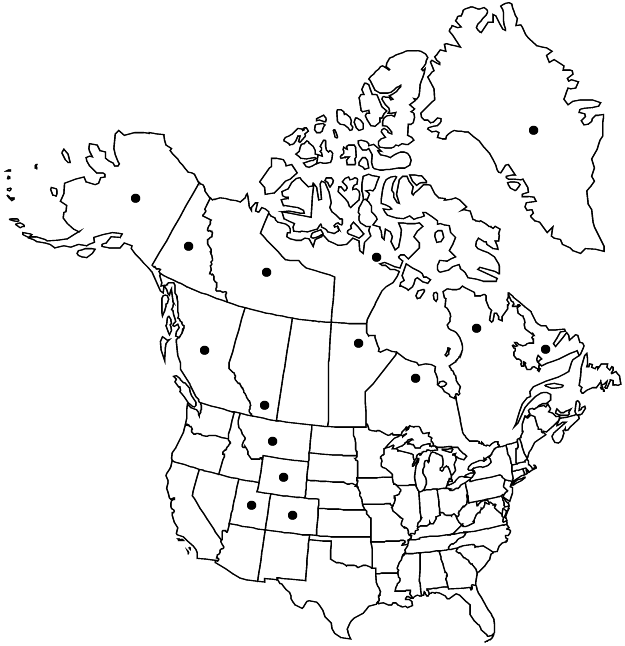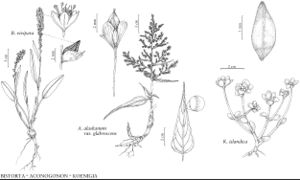Difference between revisions of "Koenigia islandica"
Mant. Pl. 1: 35. 1767.
Syst. Nat. ed. 12, 2: 71, 104. 1767.
FNA>Volume Importer |
imported>Volume Importer |
||
| Line 12: | Line 12: | ||
}} | }} | ||
|common_names=Island koenigia;koenigia d’Islande | |common_names=Island koenigia;koenigia d’Islande | ||
| + | |special_status={{Treatment/ID/Special_status | ||
| + | |code=F | ||
| + | |label=Illustrated | ||
| + | }} | ||
|basionyms= | |basionyms= | ||
|synonyms= | |synonyms= | ||
| Line 50: | Line 54: | ||
|publication title=Mant. Pl.;Syst. Nat. ed. | |publication title=Mant. Pl.;Syst. Nat. ed. | ||
|publication year=1767;1767 | |publication year=1767;1767 | ||
| − | |special status= | + | |special status=Illustrated |
| − | |source xml=https:// | + | |source xml=https://bibilujan@bitbucket.org/aafc-mbb/fna-data-curation.git/src/bb6b7e3a7de7d3b7888a1ad48c7fd8f5c722d8d6/coarse_grained_fna_xml/V5/V5_1225.xml |
|subfamily=Polygonaceae subfam. Polygonoideae | |subfamily=Polygonaceae subfam. Polygonoideae | ||
|genus=Koenigia | |genus=Koenigia | ||
Revision as of 23:30, 27 May 2020
Plants (0.5–)1–8(–20) cm. Stems often reddish, branched or simple, rooting adventitiously from proximal nodes. Leaves: ocrea brownish, broadly funnelform, 1–1.5 mm, margins oblique; petiole (0.1–)2–10 mm; blade 1–6.5 × 1–5 mm, base tapering to truncate, apex obtuse to acute, glabrous. Pedicels 0.1–1.5 mm or absent. Flowers: perianth 0.9–1.8 mm; tepals ovate to elliptic, margins entire, apex obtuse; stamens ca. 1/2 as long as tepals. Achenes 1–1.8 × 0.7–0.8 mm, dull. 2n = 14 (Mongolia, Norway), 28.
Phenology: Flowering Jul–Aug, fruiting Aug–Sep.
Habitat: Arctic tundra and alpine meadows with permanently moist gravel, especially around persistent snow patches near streams, ponds, and lakes
Elevation: 0-4400 m
Distribution

Greenland, Alta., B.C., Man., Nfld. and Labr. (Labr.), N.W.T., Nunavut, Ont., Que., Yukon, Alaska, Colo., Mont., Utah, Wyo., s South America (Argentina, Chile), n Europe, c, e Asia.
Discussion
Koenigia islandica is among the smallest of terrestrial flowering plants and one of few annual species in arctic and alpine floras. Some other species exhibit a similar bipolar distribution (e.g., Anemone multifida Poiret, Osmorhiza chilensis Hooker & Arnott, and Carex macloviana D’Urville).
Selected References
None.
